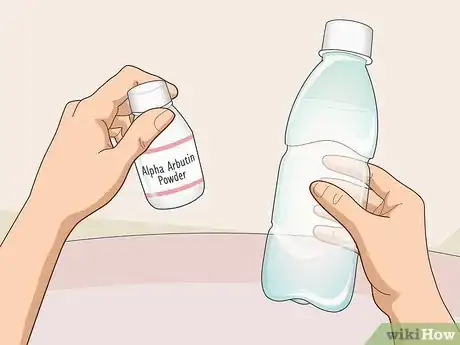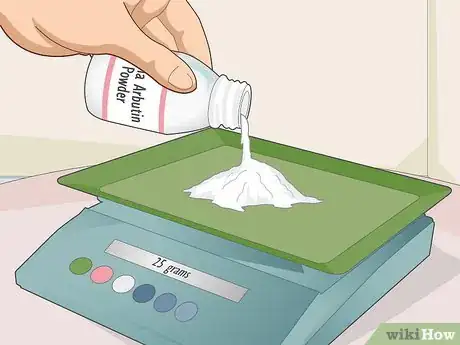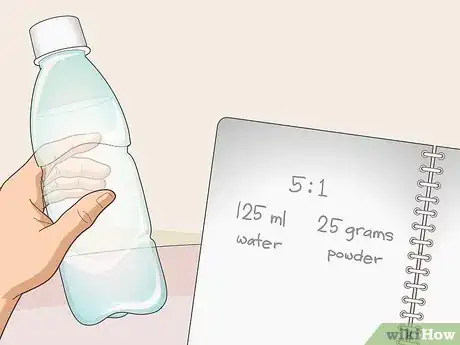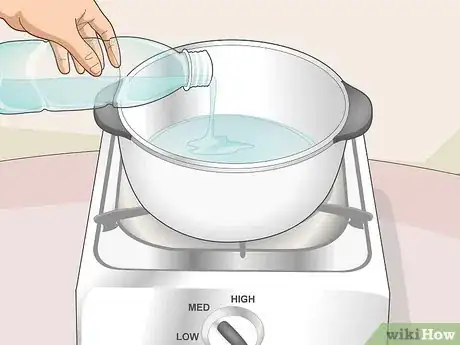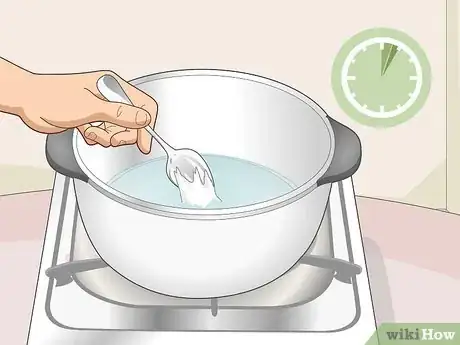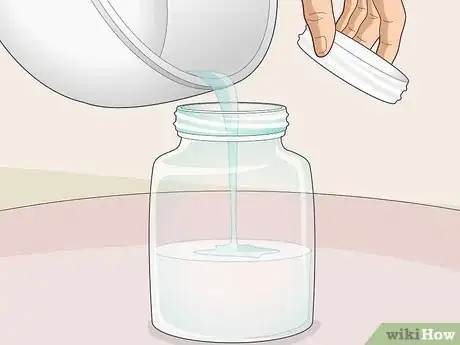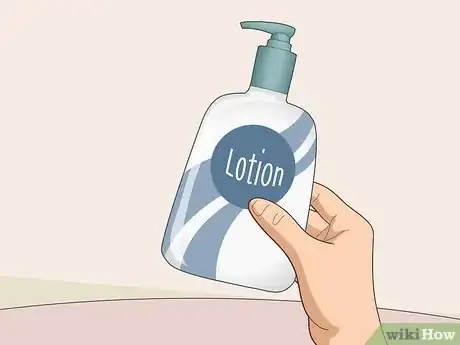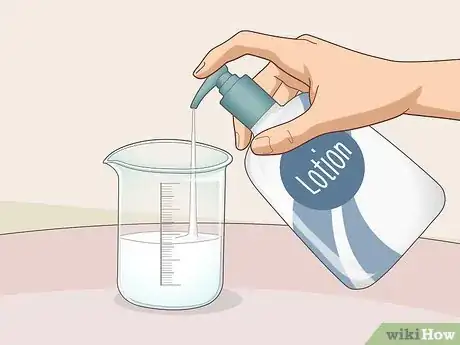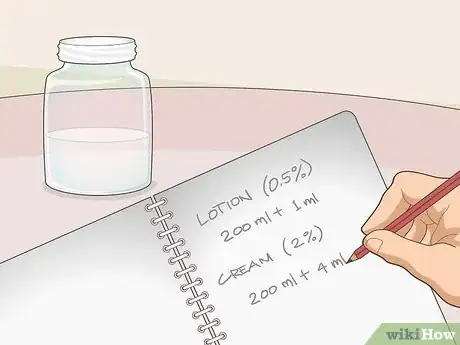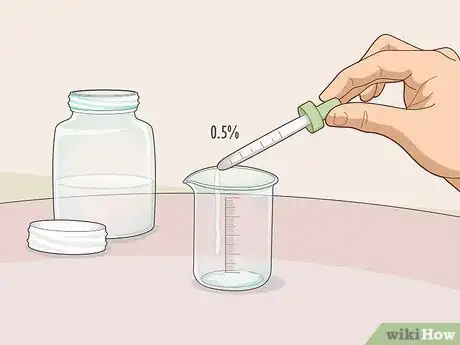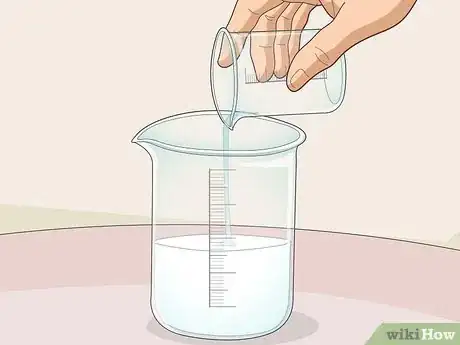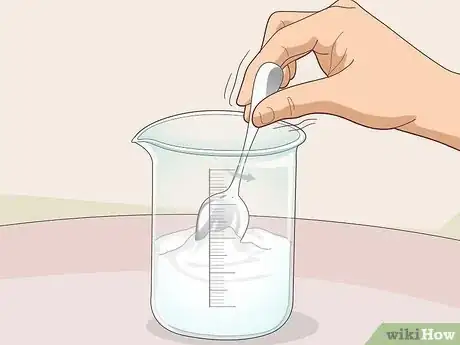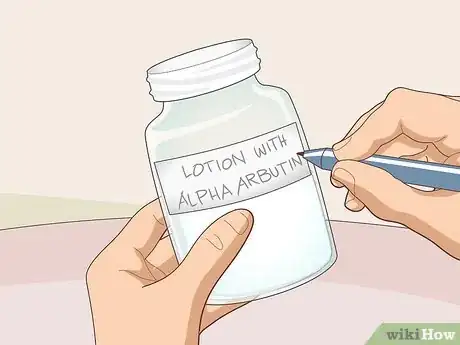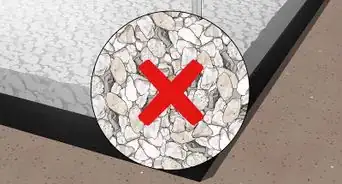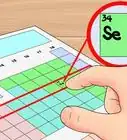This article was co-authored by wikiHow staff writer, Eric McClure. Eric McClure is an editing fellow at wikiHow where he has been editing, researching, and creating content since 2019. A former educator and poet, his work has appeared in Carcinogenic Poetry, Shot Glass Journal, Prairie Margins, and The Rusty Nail. His digital chapbook, The Internet, was also published in TL;DR Magazine. He was the winner of the Paul Carroll award for outstanding achievement in creative writing in 2014, and he was a featured reader at the Poetry Foundation’s Open Door Reading Series in 2015. Eric holds a BA in English from the University of Illinois at Chicago, and an MEd in secondary education from DePaul University.
This article has been viewed 46,345 times.
Learn more...
Alpha arbutin is a naturally occurring chemical that is primarily found in bearberry plants. It has a natural whitening quality that makes it ideal for creams and lotions if you want to achieve lighter skin or cover blemishes. While alpha arbutin is safe to mix into creams and lotions in small doses, it must always be dissolved in water first. In addition, synthetic arbutin can be dangerous since it may break down into carcinogenic chemicals. Be sure to always buy pure alpha arbutin and never create a homemade lotion or powder that is more than 2% alpha arbutin.
Steps
Dissolving Alpha Arbutin
-
1Dissolve alpha arbutin in water before adding it to other products. Pure alpha arbutin comes in powdered form. This powder must not be applied directly into a skin because it’s too potent and may cause a burning sensation. In addition, it cannot be mixed directly into a skin care product without being dissolved first. If it isn’t dissolved, the arbutin will just sit in the product like flaky chunks of powder and won’t spread evenly across your skin.[1]
Warning: When buying alpha arbutin powder, make sure that you’re purchasing it from a reputable source. Synthetic alpha arbutin is dangerous, and may possibly be carcinogenic.
-
2Use a digital scale to weigh your alpha arbutin. While it hasn’t been studied thoroughly, alpha arbutin‘s shelf life is roughly 12 months. If you plan on using it every day, use 20–25 grams (0.71–0.88 oz) or more. If you only plan on using alpha arbutin on occasion, use 10–15 grams (0.35–0.53 oz). Use a digital scale to weigh out your arbutin, or purchase a bottle containing the exact amount that you plan on using.[2]
- The 2 main reasons to use alpha arbutin are for skin lightening and covering blemishes from skin discoloration. If you’re trying to lighten your skin, start off with a 2-month supply (around 25 grams (0.88 oz)) so that you can make adjustments to your skin lightening formula once you find what’s working for you.
Advertisement -
3Calculate the amount of purified water needed to create a 5:1 ratio. The easiest way to get purified water is to purchase it. Alternatively, you can use a commercial water filter or boil the water for 30 minutes. Avoid chemically purifying your water with iodine or bleach since it may modify the arbutin in an unexpected way.[3]
- You need 5-parts water for every 1-part alpha arbutin. To determine how much you need, multiply the amount of arbutin by 5 and convert it to milliliters. For example, if you’re using 25 grams (0.88 oz) of arbutin, multiply it by 5 to get 125 grams (4.4 oz). This converts to 125 millilitres (0.53 c) of water.
-
4Put the water in a pot and turn the stove to medium heat. Pour your purified water into a small, clean pot. Set your pot on a stove burner. Turn the heat on your burner to medium.[4]
Warning: Many people mix other skin care products into the arbutin when it is dissolving. This is dangerous since you never known how heating another product with arbutin changes the chemical composition. Do not add anything else to your pot.
-
5Add the powder to the pot and stir the mixture for 3-5 minutes. Use a clean spoon to gently mix the water and powder as it heats. Continue stirring gently for several minutes until you see the alpha arbutin powder completely dissolve into the water. Remove the pot from the stove once your powder has completely dissolved.[5]
-
6Transfer the alpha arbutin mixture to an airtight container. Let the mixture cool for 5-10 minutes after dissolving the alpha arbutin. Grab a plastic or glass container with a closable lid. Set it on your counter and pour the alpha arbutin and water into the container.[6]
- If you’re worried about making a mess, use a funnel to pour the mixture.
-
7Store the mixture at room temperature for up to 12 months. Close the lid on the container and store it at room temperature. Keep the mixture out of direct sunlight and keep it away from other mixtures, creams, or lotions to avoid mixing them up.[7]
Adding the Dissolved Solution to Lotions and Creams
-
1Choose a water-based cream or lotion to mix with the solution. Dissolved alpha arbutin is generally safe in any skin care product that is applied directly to the skin so long as it makes up less than 2% of the total composition of a face cream, and 0.5% of a body lotion. Choose a lotion or cream that you use regularly to combine with your dissolved alpha arbutin.[8]
- You cannot mix arbutin into an oil-based cream or lotion since the oil and water won’t mix evenly.
Tip: Alpha arbutin is often mixed with kjic acid, vitamin C, or niacinamide to create a homemade skin whitening cream. If you use one of these whitening agents, be sure to wear sunscreen whenever you go out.
-
2Measure how much lotion or cream you’re going to use. Use a measuring cup to measure out how much skin care product you want to mix. Set a small measuring cup down and pour your skin product into the cup to measure it. Write this measurement down.[9]
-
3Calculate how much dissolved arbutin you need to make a 2% or 0.5% mixture. For body lotions, add 0.5% of the product’s volume to the lotion. If you’re adding it to a facial cream, add 2%.[10]
- Alpha arbutin can be quite strong on its own and cause a burning or stinging sensation if it takes up a high percentage of the lotion or cream.
- For example, if you have 200 millilitres (0.85 c) of skin care lotion, add 1 mL (0.0042 c) of dissolved arbutin. If you have a facial cream, add 4 millilitres (0.017 c).
-
4Fill a measuring cup with 0.5-2% of dissolved arbutin or use a dropper. If you’re using making a large amount, feel free to measure out the dissolved alpha arbutin using a standard measuring cup. If you’re only adding a few drops, it can be quite difficult to do this with a standard measuring cup. Use a dropper instead by soaking up a small amount of dissolved arbutin into the glass tube.[11]
-
5Add the dissolved arbutin to make your mixture. If you’re using a measuring cup, pour the arbutin directly into the cream or lotion. If you’re using a dropper, apply the drops individually by adding them one at a time. A single drop from a dropper bottle is the equivalent of 0.05 mL (0.00021 c).[12]
-
6Mix the cream or lotion with a spoon or mixing stick. Once you’ve added your dissolved arbutin, mix it into the cream or lotion. Use a small spoon or a wooden mixing stick. Stir gently for 30-45 seconds until you see the dissolved arbutin thoroughly mixed into the cream or lotion. Once done, store the cream or lotion in an airtight plastic container.[13]
- Since arbutin is water soluble, it should mix quite easily into the lotion or cream.
-
7Label your cream or lotion and store it in a dark area. Clearly mark the label of your lotion or cream to ensure that you know you’ve already mixed alpha arbutin into it. Store your cream or lotion at room temperature and keep it out of direct sunlight to ensure that it remains stable.[14]
Warnings
- Alpha arbutin can break down into carcinogenic chemicals if it comes from a synthetic source. Always buy your alpha arbutin from a reputable dealer.⧼thumbs_response⧽
- The scientific research or the long term effects of alpha arbutin are still being studied.⧼thumbs_response⧽
- Never rub alpha arbutin directly into your skin. It is known to cause a burning sensation for many people.⧼thumbs_response⧽
Things You’ll Need
Dissolving Alpha Arbutin
- Pure alpha arbutin
- Pot
- Purified water
- Measuring cup or scale
- Funnel
- Airtight container
Adding the Dissolved Solution to Lotions and Creams
- Measuring cup
- Spoon or mixing stick
- Dropper
- Plastic container
References
- ↑ https://www.youtube.com/watch?v=gpH3TCAELXk
- ↑ https://www.youtube.com/watch?v=gpH3TCAELXk
- ↑ https://www.nps.gov/articles/2wayspurifywater.htm
- ↑ https://www.youtube.com/watch?v=gpH3TCAELXk
- ↑ https://www.youtube.com/watch?v=gpH3TCAELXk
- ↑ http://www.nardev.com/UploadSection/ProdCat-481-1449729649.pdf
- ↑ http://www.nardev.com/UploadSection/ProdCat-481-1449729649.pdf
- ↑ https://www.dsm.com/personal-care/en_US/events-and-news/press-releases/2015/07-29-alpha-arbutin-safe-for-use.html
- ↑ http://www.nardev.com/UploadSection/ProdCat-481-1449729649.pdf
- ↑ https://www.dsm.com/personal-care/en_US/events-and-news/press-releases/2015/07-29-alpha-arbutin-safe-for-use.html
- ↑ https://www.dsm.com/personal-care/en_US/events-and-news/press-releases/2015/07-29-alpha-arbutin-safe-for-use.html
- ↑ https://www.unitconverters.net/volume/drop-to-milliliter.htm
- ↑ https://youtu.be/Hl8M_40fSM0?t=211
- ↑ http://www.nardev.com/UploadSection/ProdCat-481-1449729649.pdf
